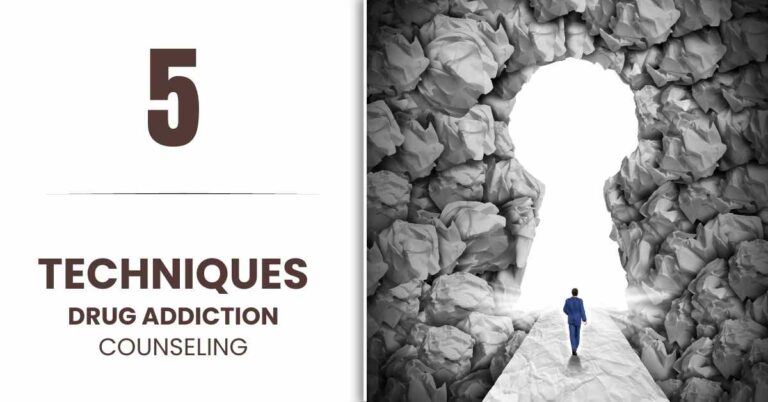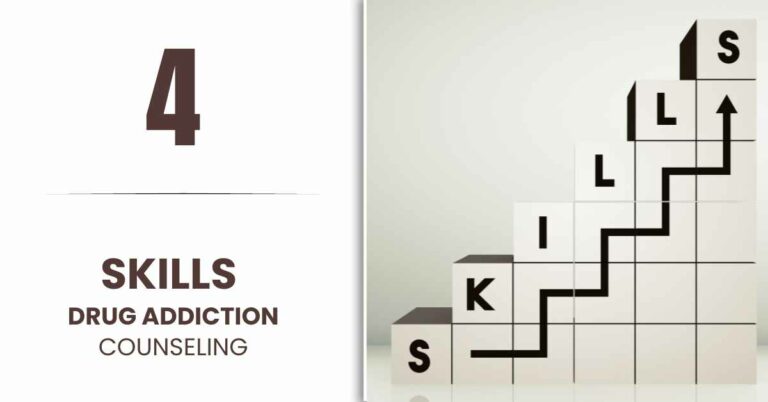
1 Simple Way to Detox Mind & Body
Discover the transformative power of viewing detox not just as a physical cleanse but as a holistic approach to living, emphasizing the profound connection between mind, body, and environment.

This unit will cover the basic procedures for drug addiction counseling.
Building an alliance with your client is crucial to the success of any counseling program. In drug addiction counseling, we call this a therapeutic alliance. The counselor should create a sense of participation in collaboration and partnership. There are three key ways to develop this collaboration and partnership.
First, the counselor should possess a thorough knowledge of addiction and the consequences of drug use. Second, no matter how experienced the counselor is, he or she must acknowledge that the client is the true expert in discussing his or her own life. The counselor must listen intently, effectively, and avoid passing judgment. This is difficult for a lot of counselors. Some people like to act as a parent does with his or her child; but when you are a counselor, you are talking to another adult and adults have more cognizant capability to understand how their behaviors lead to certain consequences. Third, the counselor should convey to their clients that he or she is their ally in this difficult process and is there to help them achieve their goals.
It is very difficult to develop trust because many drug users have lost their trust and faith in others. It will take time for them to feel confident that you are someone they can trust and work with. Each of these approaches should help strengthen the therapeutic alliance and make the relationship a collaborative one. There are many assumptions that are built into this model. Simply saying, “Oh yes, I know which step I need to go to now” will not be sufficient. You will need a great deal of understanding of your clients and their situations before knowing when and how to proceed.
Generally, the interventions that are most helpful in fostering a strong therapeutic alliance are those that involve the counselor’s active listening and those that utilize collaboration. For example, after the client reports a relapse, the counselor might say,
“Let’s examine what happened and develop a plan together to help you avoid using drugs next time.”
Such language highlights the combined effort in the relationship.
If the therapeutic relationship initially seems weak, the counselor might use the following simple strategy to address the problem: ask clients what they think or feel is not working in the relationship or what they think or feel is causing it not to work.
Often clients know what might improve the therapeutic relationship, but, for some reason, they don’t feel comfortable to mention it until the counselor initiates the topic. For improvement to occur, counselors should be willing to accept feedback from clients and change the approach as appropriate. However, in responding to a client’s
request to change, counselors should not feel pressured to change or in any way compromise their philosophy of addiction treatment. Rather, counselors can adjust their interpersonal styles to improve the working alliance.
Drug addiction counseling with individuals and groups is a dynamic and circular process. There are seven steps to the process. The first step is to have an initial introductory meeting with the client. In the initial moments of the first session, the client is likely to be nervous and cautious about who you are and whether or not they should really trust you. Even if you try your best, the trust between client and counselor will take time to develop. However, it is important that they see you as someone who treats them with respect and dignity before you begin the counseling process.
The counseling process is a loop. It starts with assessment of the biological and psychosocial needs of the client. You want to be able to understand the multi- dimensional issues of drug use as it relates to your clients. You will often assess individuals on their health, education, employment, alcohol and drug use, family/social, legal and emotional background. The assessment will lay the foundation for the next series of steps and future sessions you have with your clients.
As we progress through this unit, we will discuss each of the issues related to the holistic and circular nature of each of the steps in the counseling procedures. The counseling process is not a linear process where there is a clearly delineated finale. As depicted in the slide, the process is circular; you start with assessment, problem solving, goal setting and development of an action plan, then you proceed with revising the plan, summarizing the activities, and then beginning again with a new assessment. This is performed over time, but not at every counseling session. Hence, it is an ongoing process, and as some problems get resolved, others are likely to emerge.
(Applied to drug users and recovering drug users)
Taking into consideration all of the attributes of good counseling, the first meeting with your client should include:
Counseling and treatment entry assessment requires a relatively comprehensive assessment of the client’s condition and specific problems, needs, or issues, including health, psychological., and social. This is called a biological-psychosocial assessment, or bio-psychosocial assessment. The counselor will be responsible for completing a bio-psychosocial assessment in conjunction with gathering a client history in the first or second session.
Assessment typically examines drug use and related problems over the past 30 days. It must be completed when the client enters treatment to establish a baseline and to identify areas of need, and then at selected follow-up sessions thereafter to measure change. Assessment should generally focus on: drug use, alcohol use, health problems, psychological problems, financial problems, legal problems, family/social problems, and employment/support problems. It requires approximately 45 minutes for the initial assessment and about 25 to 30 minutes for each follow-up assessment. Demographic and psychosocial information (age, gender, educational level, marital status, who the client lives with, existence of a support network, income) is also important because it will help you to understand clients’ problems and available resources for responding to those problems.
Once the client assessment is completed, the client and counselor should identify the main topics that they would like to address and prioritize these topics, because not all issues can be covered in the first session. The prioritization of these problems may change over time, so it will be helpful to develop a working problem list that you revisit at the beginning of each counseling session to see whether or not a specific problem persists, and to what degree your client is concerned about that problem.
Clients often enter treatment ambivalent about how much they want to give up their drug use. Counseling begins with helping the client decide to participate in treatment and to set realistic goals, for example reducing risk from drug use, or learning to abstain from drug use. The counselor can help the client recognize and understand the damaging effects of addiction and develop motivation to recover. In this
progressive treatment model, the client’s ambivalence is discussed specifically in the first 2 weeks of treatment, although motivation and commitment to recovery may be recurring topics to be discussed throughout treatment. We will address Stage of Change Theory and motivational interviewing approaches to assist in addressing this ambivalence in later units.
You should devote your first two sessions of counseling to introducing the treatment program to your client, obtaining a drug usage and treatment history, and developing a treatment plan with your client. In addition to setting up the framework for counseling and treatment, the first two sessions are important in fostering client motivation to set goals.
It is not uncommon to face ambivalence and denial in the early phase of treatment. Because they are fundamental roadblocks to recovery, counselors should discuss them in the first two sessions and throughout the treatment process, as needed.
Assessment does not happen only once. At the beginning of each session, counselors should inquire how things have been going since the last session and whether the client has used any drugs. Any drug use should be noted. If the client has relapsed, the client and counselor should analyze the relapse, determine what precipitated it, and develop alternatives that can be used to avoid relapsing again. This process will probably require the full session.
If the client presents with an urgent, addiction-related problem (like family arguments or financial problems as a result of addiction) the counselor should address these problems in the session. Emphasis should be placed on how these problems are related to the addictive behavior.
The counselor’s goal is to help the client develop strategies for dealing with the problems without turning to drugs. For example, the loss of one’s job or severe relationship problems will require acknowledgment and some attention in the counseling session. However, the main purpose of the session is to reduce risk associated with drug use, and the promotion of recovery from addiction, not the resolution of the client’s other life problems.
If there are no urgent problems, then you can begin a discussion with your client. Follow these problem-solving steps:
When the counselor and the client are clear on the problems and possible solutions for these problems, they can move on to setting short-term goals.
Short-term goals should be SMART (Specific, Measurable, Achievable (agreed upon by both the client and the clinician), Realistic and Time-bound). Your clients can be classified in terms of their preparedness to change. We will discuss stages of change later, but just note that it helps if the goal that you set with your client is matched to his/her stage of change. Short-term goals are most easily determined when an individual is in the action phase. Goals that are action – oriented require people to be in the action stage. If they are still in the contemplation phase, their goals may not be action-oriented.
By the second session, the counselor should finish the bio-psychosocial assessment (if needed) and develop a treatment/action plan, in collaboration with the client.The action plan should identify the problems to be addressed in treatment and the desired goals. Counselors should try to ensure that the primary problems identified are the risks associated with drug use and addiction; other problems should be addiction related. The initial treatment plan is basic. Its purpose is to clarify the mutually agreed upon goals of the client and counselor, with the client making a commitment to work toward recovery.
The counselor should inquire about the client’s experience with social support groups and ask whether the client already attends meetings, has previously attended but no longer attends, or has never attended them. If unfamiliar with social support groups, counselors should briefly introduce clients to the group-counseling approach and provide a list of where sessions are conducted in the area. All clients should be encouraged to attend meetings as often as it is possible as part of their recovery plans. If agreed to, participation in social support groups should be listed on the treatment plan.
Once you have selected one or two realistic and achievable goals, you will then need to define these clearly. Be precise in defining your goals – put in dates, times and amounts so that you can measure achievement. Divide each goal into small steps that
are also precise. These steps should be ones that you can attain in a short period of time – over days or weeks. Identify clients’ willingness to change on a scale from one- to-five and rate their confidence in their capacity to change on the same scale.
Following completion of the active treatment/counseling plan, clients may benefit from reviewing and revising their original plans as necessary. This is best done by summarizing your jointly agreed upon goals and strategies to be implemented and followed up in coming sessions. This helps to focus attention on the strengths and available resources to assist the client to begin behavior change. It can also assist clients to maintain their commitment.
The subject matter discussed in the follow-up sessions should continue to be addiction related. These will often involve the repetition of earlier topics with a new and higher level of understanding and integration. Clients who have recently stopped drug use may have difficulty understanding and retaining new information. It is not unusual to need to revisit and discuss issues many times.
The goals of plan revision include to:
The final component in the counseling process is the summarization of activities and progress. This should be done at the end of each session. Summarization is an effective way to close the session. You review with your clients what you have discussed and agreed to, and the way to move forward. It is also a way to assess their confidence and commitment to do what has been agreed.
Having confidence means believing in your own capability to perform a task. Commitment is to what degree you are willing to take action.
Therefore, at the end of each session, the following should occur:
There are three main reasons why documenting clients’ records are necessary:
Summarization (or what might be called the evaluation of progress) is an opportunity to reintroduce issues and topics that might still need to be addressed. It is at this point that you and your clients should establish new goals and action plans to encourage new progress. This may also be a good place to begin the counseling cycle anew, as referenced in the cyclic diagram.
This concludes discussion of the counseling procedures and some of the issues and areas that you will face.
A few important tips that will help you manage your sessions effectively:
Counselors adopt an active listening approach. As discussed previously, counselors should draw logical conclusions from the information the client gives in relation to their substance use and related problems. Those connections may not be obvious to clients themselves. When an issue has been explored to a logical conclusion, the counselor should change topics and move onto the next issue.
Discussions should remain oriented towards the problems associated with substance use, and summarization should be used to draw together significant points and reinterpret them in a way that makes sense to the client.
In this context, we will discuss a few key points about the role of the counselor.
The counselor’s primary role is to elicit and consolidate the client’s motivations for change. This facilitator role includes being a collaborator in the recovery process.
The client should do almost 90% of the talking, except during personal assessment feedback, when the counselor as a substantial explanatory role.
Sessions should be client-centered but directive. The counselor pursues a specific objective or set of objectives systematically, having assessed the client’s issues and needs. When this is done successfully, the client should not feel directed, coerced, or advised. Direction is typically accomplished through open-ended questions and selective reflection of client material, rather than through more confrontational strategies and advice-giving. To use a metaphor, the client and counselor are working on a puzzle together. Rather than putting the pieces in place while the client watches, the counselor helps to construct the frame, then puts pieces on the table for the client to piece together.
In the early stages of counseling, it is important to establish a therapeutic alliance. The basic elements of client-centered therapy provide a strong foundation, with particular emphasis on
the use of open-ended questions and reflective listening. These supportive and motivation building strategies are employed until resistance abates and the client shows indication that he/she is prepared to discuss change.
So now that you have a good sense of the procedures, it will be helpful to discuss how you can keep the session moving along and directed. This slide shows how combining counseling skills and techniques together can help keep your sessions focused and directive. Whether you are working on problem solving, goal – setting, relapse prevention, or managing cravings, these are the things that you will use to make your counseling sessions successful.
So how does a counselor work with his/her clients and keep thing timely and not rushed?
You can accomplish by combining these counseling skills:
……with the variety of counseling techniques you have learned in this course. Successful combination of these skills and techniques should result in the following:
Use of these techniques and skills in a 45-minute session will ensure that the client feels welcome, understood, supported and, most importantly, that the session begins and ends on time. By using these techniques and skills, you are guiding the conversation and effectively managing the time of the session.
So each counseling session has a start, middle and end. In the beginning, you may end up talking a bit more than the client to provide an introduction the services at your organization and the objectives of the counseling process. But soon you will be working on problem solving, goal – setting and prioritization. At this point, your client will be doing the majority of the talking. Then you will provide a summary of the session. You will then do the majority of talking. You can think of counseling like a sandwich, where your opening and closing remarks are like two pieces of bread, and the meat in-between is the substance of the session provided by the client.
Before we practice some exercises to see what you have learned, let us review. The counseling process has distinct steps that follow a circular pathway. After the initial introduction and orientation of the services that are provided, the counselor should undertake an assessment to identify problems to which there are potential solutions. After problem solving, the counselor should then work together with his client on goal – setting and prioritize a course of action. Summarising the session will provide an opportunity for further revisions or modifications in the light of unforeseen problems. Then the process can be continued at the next session by undertaking further assessment and evaluation.
Remember, it is important to establish and maintain a close therapeutic alliance with your client to achieve results. The counselor is there to coach the client on issues and concerns that they have in relation to their substance use and related risks. In order to ensure the process moves forward, counselors should ensure they are regularly summarizing, reviewing progress, and setting new goals with their clients.
In summary, during this unit we focused the following:
Compiled by : Dr. Valsalan Nair

Discover the transformative power of viewing detox not just as a physical cleanse but as a holistic approach to living, emphasizing the profound connection between mind, body, and environment.

Discover the crucial link between inner peace and deep sleep, and learn the one thing you should never do if you want to enjoy restful nights and wake up refreshed.

Discover the profound wisdom of utilising life’s four treasures—Gyan, Yog, Dharna, and Seva—to amplify your happiness and blessings manifold. Learn how to transform these gifts into a source of endless joy and fulfillment in your life.

Discover how to cleanse your wrong karmas through affirmations, meditation, and self-forgiveness. Learn to let go of the past and embrace a peaceful and powerful present with our insightful guide

Discover the transformative power of positive thinking in reshaping challenging relationships, particularly within the family. Learn how changing our internal dialogue can manifest harmony in our external world.

Discover how altering just one erroneous belief can significantly transform your life and the lives of those around you. Embrace the journey of introspective change and live life on your terms.

Uncover effective strategies for mind control and emotional mastery. Explore our comprehensive guide on cultivating inner peace, resilience, and a positive mindset in the face of life’s challenges.

Embrace the age-old wisdom of “Early to bed, early to rise” for a healthier life. Prioritize sleep between 10 p.m. and 2 a.m. for optimal rest. Adopt a nightly routine of disconnecting, meditation, and positive affirmations. Incorporate a Satvik diet for well-being. Embracing these practices can significantly enhance your physical, emotional, and mental health.

We should consider it our prime duty to recognise thoroughly that lust is not the right thing but a vice, a despicable thing, an evil

SHORT DEFINITION OF ADDICTION Addiction is a primary, chronic disease of brain reward, motivation, memory and related circuitry. Dysfunction in these circuits leads to characteristic

Counseling Techniques Sometimes a counselor might know the skills and techniques required for doing effective drug addiction counseling, but that does not necessarily mean that

Counseling Skills In order to help you understand the difference between skills and techniques, I would like first to discuss “techniques”. A technique is a
Start your day with a breeze of positivity and stay motivated with these daily affirmations
After Clicking on Join, You will be redirected to Whatsapp Community to receive daily message. Your identitiy will be secured and no group member will know about another group member who have joined.